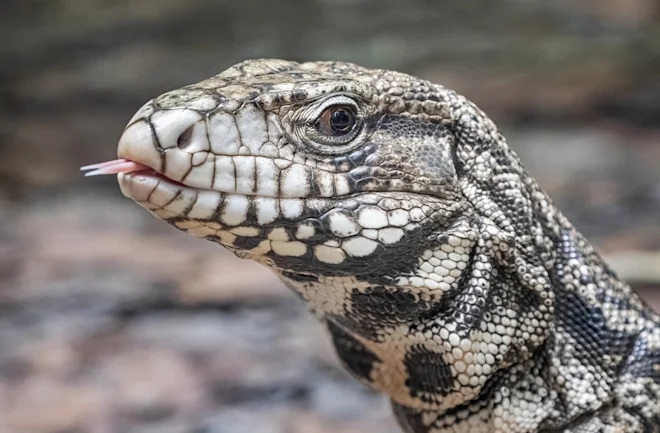
A Fascinating Discovery: The Ancient Tegu Lizard Fossil Unearthed in Florida
In an astonishing turn of events, paleontologists at the Florida Museum of Natural History have unearthed a bone that tells a remarkable story—a story of an ancient lizard species, Wautaugategu formidus, that once roamed North America millions of years ago. This discovery not only sheds light on the prehistoric wildlife of the region but also highlights the innovative intersection of artificial intelligence and paleontology.
The journey began two decades ago when Jason Bourque, a fossil preparator, stumbled upon a half-inch vertebra while exploring the museum's fossil collection. Initially perplexed by its identity, Bourque's curiosity lingered until a simple image comparison with modern tegu vertebrae revealed that it belonged to a new species. "We have all these mystery boxes of fossil bones... In the back of my mind for years and years, it just sat there," Bourque shared, illustrating the challenge of unearthing ancient secrets hidden in the museum's archives.

The fossil was discovered in a fuller’s earth clay mine, urgently excavated before it was permanently sealed away. Despite standing alone in the fossil world, Bourque's discovery was strengthened through collaboration with colleague Edward Stanley, who utilized cutting-edge machine learning techniques to create a detailed 3D model of the vertebra. This new approach, employing artificial intelligence, enabled researchers to compare the fossil against a massive database of vertebrate images, speeding up the identification process that typically relies on a paleontologist's extensive experience.
The name “Wautaugategu,” derived from a forest near the mine, joins a narrative steeped in the Middle Miocene Climatic Optimum period, when global temperatures were significantly higher. This ancient tegu likely swam from South America to the southeastern United States as the region flooded. However, the warm climate was not to last. As temperatures dropped, W. formidus likely faced reproductive challenges, leading to its eventual extinction. “It seems they were here just for a blip, during that really warm period,” Bourque noted.
This revelation opens a window to a past that has been largely overlooked. It not only presents a new chapter for the tegu but drives home the importance of revisiting previous finds with modern techniques. As scientists prepare to embark on future expeditions—seeking more fossils along the ancient coastal ridge—there lies an exciting prospect for deeper understanding of the complex history of life on Earth, particularly in Florida.
As we consider the implications of Wautaugategu formidus’s discovery, it begs the question: What other forgotten stories might be hiding in our world’s fossil archives? The fusion of traditional paleontology with modern technology holds promise for unearthing invaluable clues about our planet's biodiversity. We invite you to share your thoughts. What do you think about the role of AI in paleontological research?
Leave your comments below!